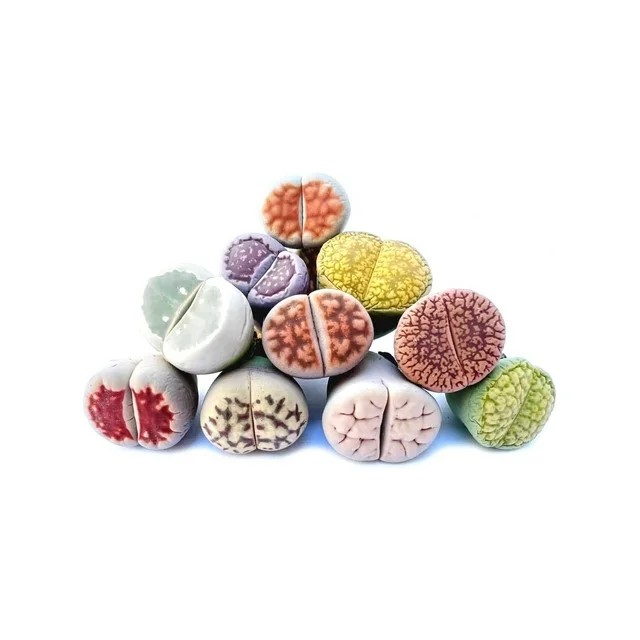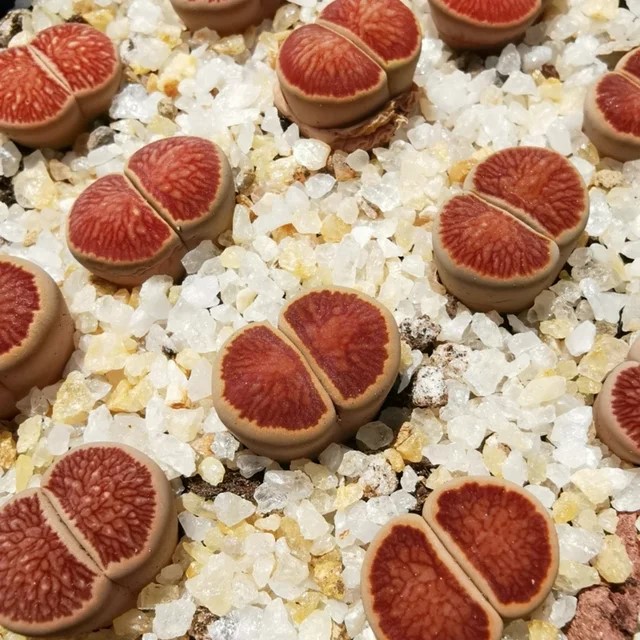How to grow lithops – the otherworldly living stone succulent
Learn how to grow lithops with our expert guide to caring for this unique indoor plant

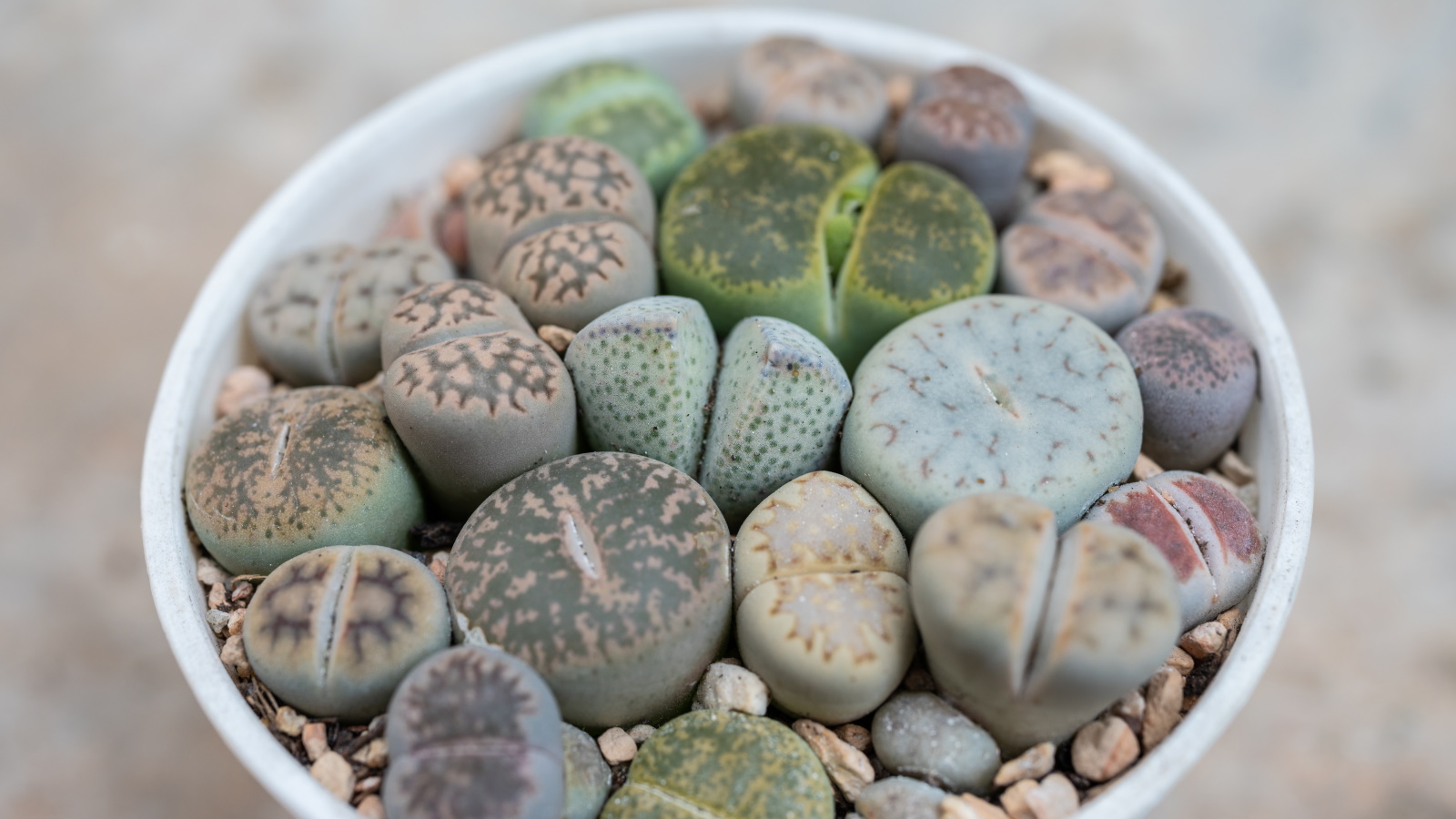
Lithops, commonly known as living stones, are unusual succulents that appear almost alien-like. Considered one of the most unique types of succulents, lithops have evolved to mimic the appearance of rocks in their native habitats across much of southern Africa.
For those interested in rock garden ideas, lithops grow in rocky regions of the world, growing in places of extreme heat and with limited water. Their pebble-like appearance prevents predators from munching their leaves and protects the plant from the sun's rays.
Lithops appear as small rocks or stones in a range of colors, appearing green, yellow, grey, pink and blue. This otherworldly aesthetic makes lithops the masters of disguise in rocky and arid environments. Yet, they also make for excellent low-maintenance indoor plants, requiring well-draining soil and bright light, mimicking their native environment. Here, experts share tips and advice for growing this most unusual succulent as an indoor plant.

How to grow lithops
Lithops, or living stones succulents, are a very unusual plant that has evolved to mimic the appearance of pebbles in rocky and arid environments. Lithops can be grown successfully as indoor plants, requiring similar conditions to most other succulents.
1. Suitable lighting for lithops plants

'Lithops are full sun plants since they originally come from deserts in southern Africa,' says Vladan Nikolic, houseplant expert and founder of Mr Houseplant. These succulents thrive with '4 to 5 hours of direct sunlight earlier in the day, and partial shade in the afternoon,' Vladan adds.
Vladan recommends placing your lithops plants in a west-facing or east-facing window. 'It’s important to give your Lithops adequate lighting. Too much light can cause burning to your lithops plants, whereas not enough light will cause the plant to elongate and lose color.'

Vladan Nikolic (Mr. Houseplant) is a Houseplant Expert and the Founder of Mr. Houseplant LLC. He has over 10 years of houseplant experience and he is the founder of the indoor plant blog www.mrhouseplant.com, a former plant shop owner, and a social media influencer for houseplants with over 500,000 followers. He helps newcomers into the houseplant world become great plant parents.
2. Ideal temperature for lithops plants
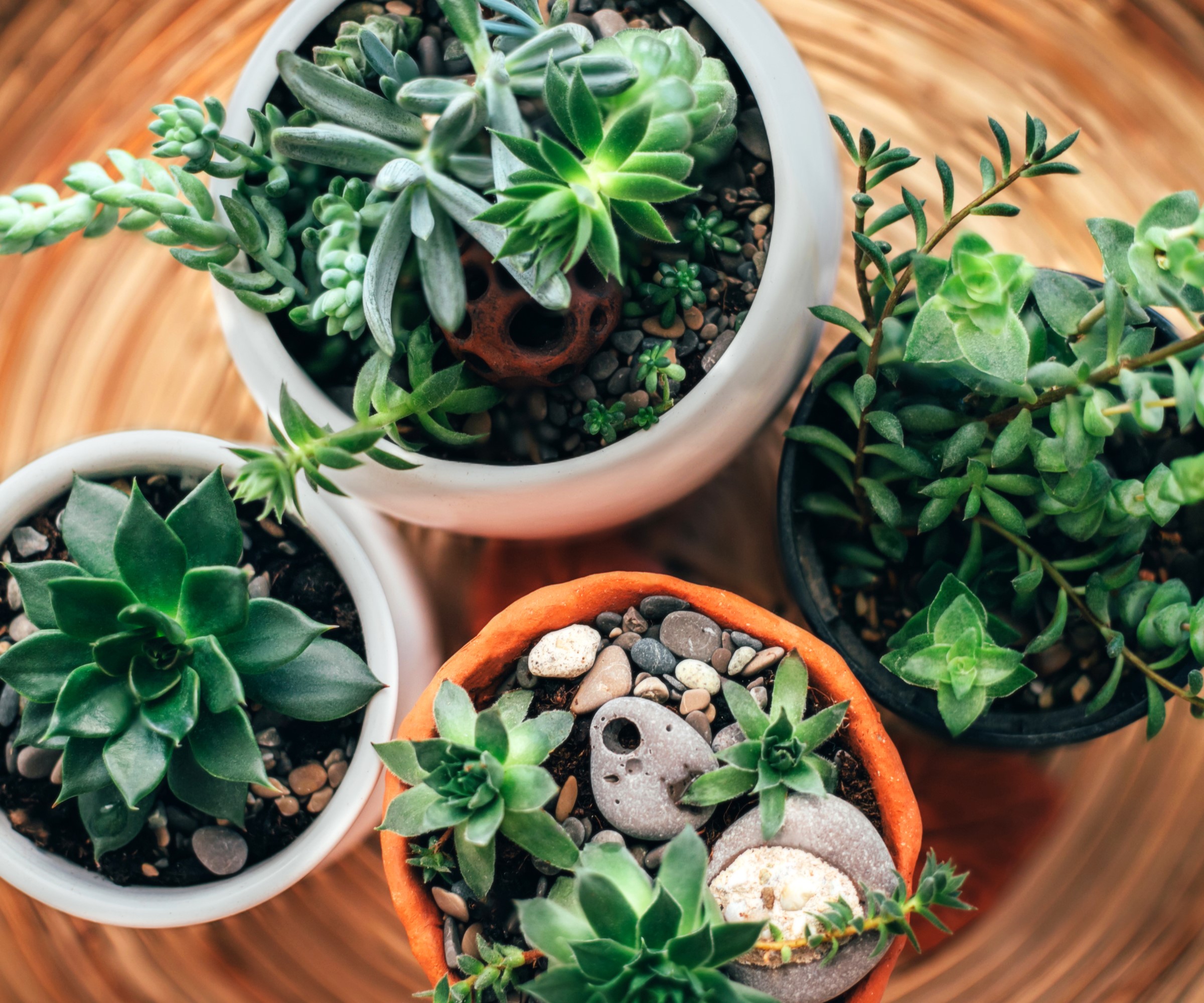
Remember that lithops are a succulent found growing in arid and desert-like environments across much of southern Africa. For this reason, when growing lithops indoors, 'ensure that the average room temperatures range from 60° to 80°F (16° to 27°C),' says Vladan.
Design expertise in your inbox – from inspiring decorating ideas and beautiful celebrity homes to practical gardening advice and shopping round-ups.
'They can tolerate higher temperatures, during the summer months, but will be damaged if the temperatures drop below 40°F (5°C) in the winter.'
Lithops will typically do well in homes with average humidity. There is no need to mist or boost the humidity, as lithops are 'used to living in harsh environments with low humidity, so they adapt well to lower humidity areas,' adds Vladan.
3. Correct soil for lithops plants
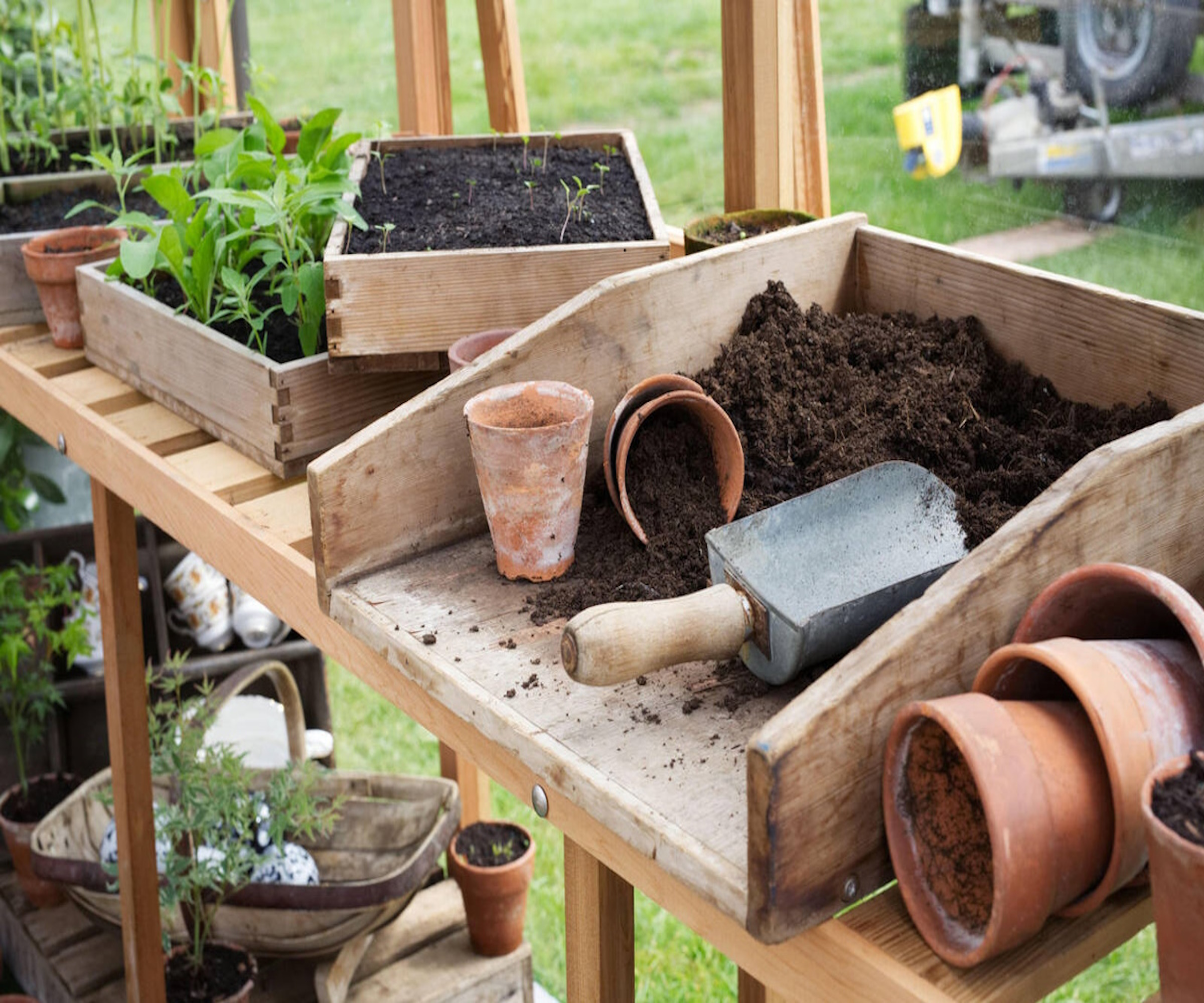
When considering how to repot succulents, it is recommended to always use free-draining soil. 'The best soil for lithops is well-draining and porous soil,' Vladan says.
One option is to pot your lithops in a store-bought cactus and succulent potting mix, using something like this cactus compost from Walmart.
'You can also make your own potting mixture,' continues Vladan. 'You can do this by mixing one part of any commercial potting mix with one part of perlite.'
It is 'best to use 3 to 5-inch deep pots with drainage holes,' Vladan says, adding some grits or stones to the bottom of the container. Remember to use a plant pot saucer if your container has a drainage hole.
4. Watering lithops plants
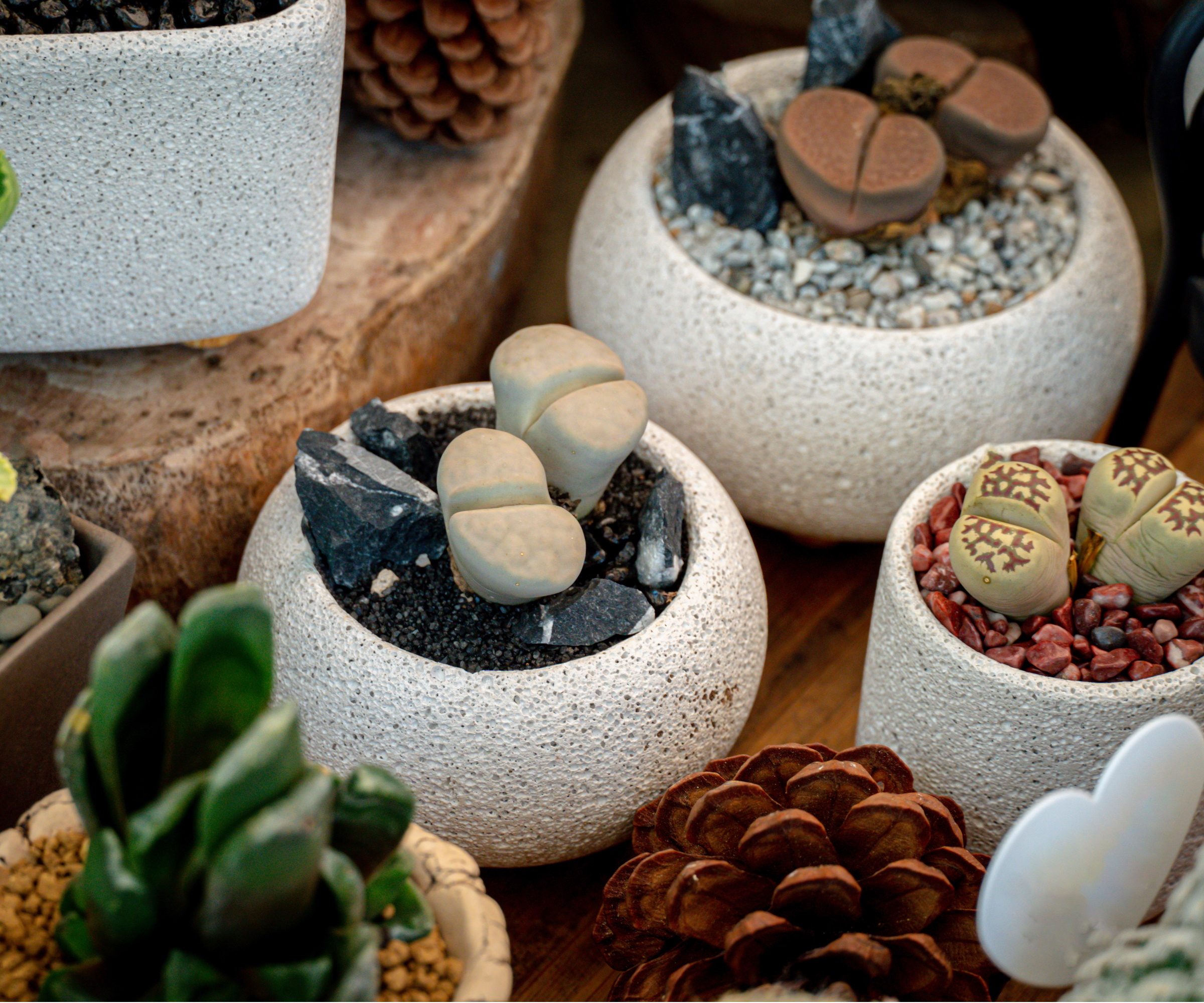
'Always err on the side of underwatering as opposed to overwatering when it comes to lithops,' says Jeannie Psomas, plant expert and owner of The Plant Lady: San Francisco.
'To make it easier not to overwater, the best possible thing you can do for your lithops is to give it the correct soil and the correct amount of light,' continues Jeannie. 'With free-draining soil, using rocks, gravel and twigs and placing your plant in a bright, warm position, you can water much more freely,' Jeannie says. In doing so, 'you'll have a greater margin of error, so always begin your lithops journey with good light and soil.'
'It is important not to water lithops plants when they are in the active growing process of splitting,' says Jeannie. 'Lithops propagate via a splitting process, using their stored water for energy to do this.'
During this time, lithops are most susceptible to rot. The most obvious sign to look for is when a gap or fissure begins to open between the succulent leaves in preparation for flowering.
If you're wondering when to water succulents, remember that these indoor plants should be left dry throughout the winter and spring months, although Jeannie has always 'found this rule to be a bit draconian, as lithops continue growing through every season.' If you are inclined to water your lithops during the colder months, do so sparingly and infrequently.

Jeanie Psomas owns The Plant Lady: San Francisco, an indoor plant shop located in San Francisco, California which caters to collectors and hobbyists alike. With a strong emphasis on plant science and education, Jeannie's philosophy is that anyone can grow gorgeous plants indoors.
5. Pests and diseases
The good news for indoor gardeners is that lithops are generally resilient and sturdy. They are typically tolerant of most indoor conditions and considered pest-free.
'While rare, in some instances, they may suffer from an infestation of spider mites,' Vladan says. 'You can use neem oil or insecticidal soap to treat a spider mite infestation. Ensuring that you follow the instructions on the label to avoid damaging the plant.'
Shop lithops plants
FAQs
Can I grow lithops on a windowsill?
Yes, a windowsill is an ideal place to grow lithops. The succulents require at least 4 hours of sunlight each day, so placing them in a warm and dry situation will mimic their native arid and rocky environment.
Growing lithops will certainly add something unusual and otherworldly to your indoor plant collection. If you have a bright and warm situation, a windowsill, or a conservatory, for example, why not consider growing other tropical indoor plants, to add even more interest to your indoor garden, many with interesting foliage and striking blooms?

Thomas is a Content Editor within the Gardens Team at Homes and Gardens. He has worked as a professional gardener for both public spaces and private estates, specializing in productive gardening, growing food and flowers. Trained in Horticulture at the Garden Museum, he has written on gardening and garden history for various publications, including The English Garden, Gardens Illustrated, Hortus, The London Gardener and Bloom. He has co-authored a Lonely Planet travel book, The Tree Atlas, due out in 2024.

